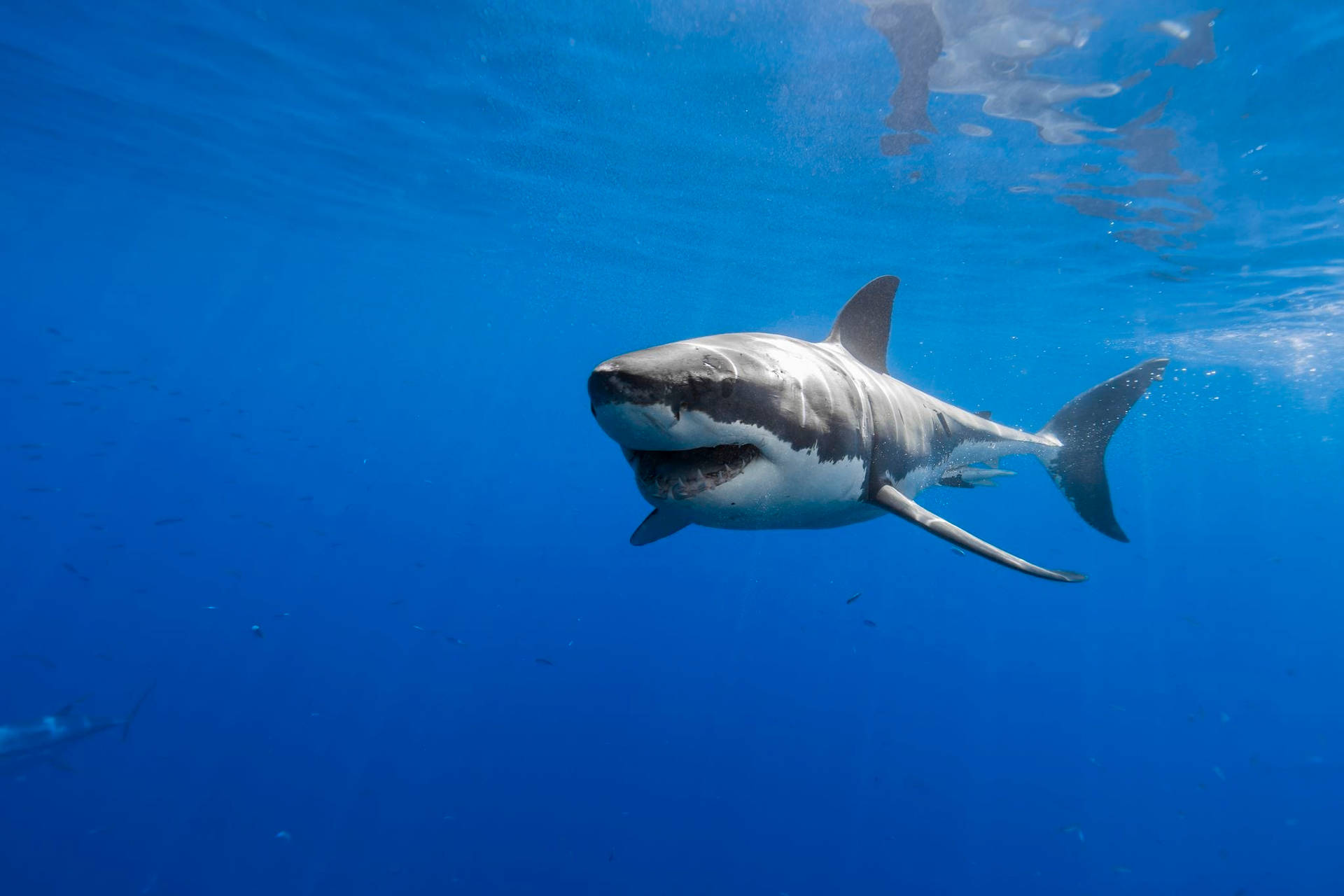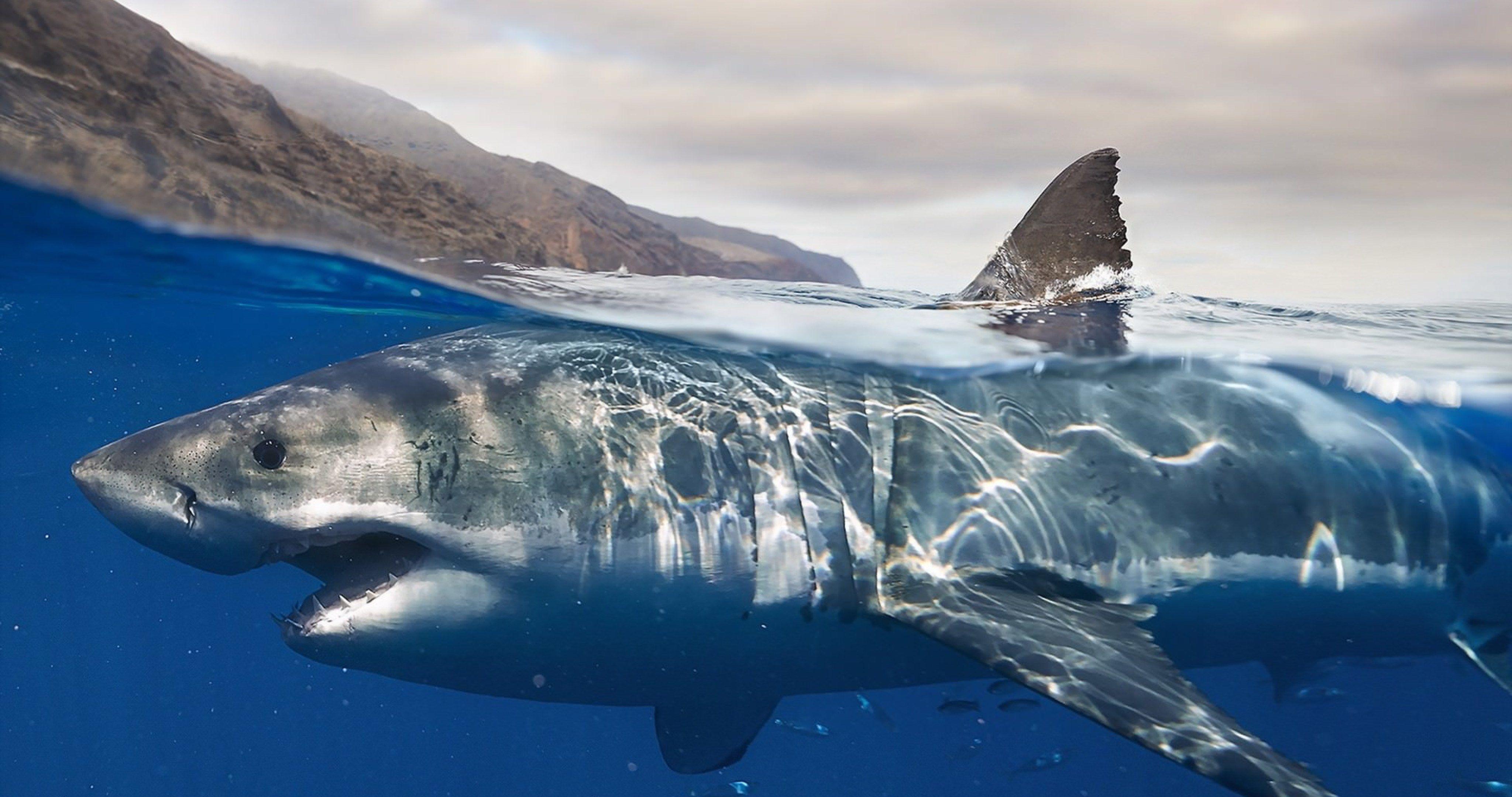Have you ever thought about what makes a golf club truly stand out? Maybe it is the material, or perhaps the design. So, imagine stepping onto the green, clubs in hand, and one of them carries a piece of ancient history. This is the very essence of a shark tooth golf club, a fascinating item that marries the thrilling world of marine life with the quiet precision of golf. It is, in a way, a conversation starter, a unique statement for anyone who appreciates both nature's wonders and the game itself.
These aren't just ordinary clubs; they often feature genuine shark teeth, carefully integrated into the design. That, is that, a connection to creatures that have roamed the oceans for millions of years. Sharks, as we know, are a group of cartilaginous fishes, characterized by their strong, ribless endoskeletons and dermal denticles. They have five to seven gill slits on each side, and their pectoral fins are not fused to the head, making them incredibly agile hunters.
The idea of having a piece of such a powerful creature on your golf gear is, frankly, quite compelling. It speaks to a certain appreciation for the natural world, and for items that carry a story. Many species of sharks have tough skin, typically dull gray in color, and they can truly rouse both fear and awe like no other creature in the sea. This kind of golf club brings that awe right into your hand, more or less, on the course.
Table of Contents
- What is a Shark Tooth Golf Club?
- The Origin of the Teeth
- Crafting These Unique Clubs
- Why Choose One?
- Caring for Your Special Club
- Frequently Asked Questions
- A Final Thought
What is a Shark Tooth Golf Club?
A shark tooth golf club is, quite simply, a golf club that incorporates real shark teeth into its structure or design. This integration often happens on the grip, or perhaps as an inlay on the club head. It is a way to add a very distinct and natural element to a piece of sporting equipment. The teeth themselves can vary greatly in size and type, depending on the shark species they came from.
These clubs are not mass-produced items you would typically find in a big box sports store. Instead, they are often custom-made or part of a limited collection. They appeal to a specific kind of person, someone who wants their golf gear to reflect their interests beyond the game itself. Basically, it is a piece of art and a tool, all rolled into one.
The concept itself is rather simple: take something incredibly old and natural, and combine it with something modern and functional. This combination creates an item that is both practical for play and interesting to look at. You know, it really makes a statement about individuality on the golf course.
Some designs might feature a single, prominent tooth, perhaps a large one from a Megalodon, while others could use a mosaic of smaller teeth. The way the tooth is integrated also varies; it might be set into resin, or perhaps carefully mounted. The overall look of the club is quite striking, very much unlike anything else you might see.
This kind of club, it's almost a bridge between two worlds. It connects the deep blue ocean and its ancient inhabitants with the green fairways of a golf course. The idea is to celebrate the natural world while enjoying a favorite pastime. It is, in some respects, a very personal item.
The Origin of the Teeth
The teeth used in these golf clubs do not come from living sharks. This is a very important point to remember. Instead, they are fossilized remains, often millions of years old. These teeth are found in various locations around the world, unearthed from ancient seabeds that are now dry land or coastal areas.
Sharks, as a class of cartilaginous fishes known as Chondrichthyes, are fascinating creatures. There are over 400 shark species known today. Their teeth are incredibly durable, which is why they preserve so well over vast periods of time. This durability means we can find teeth from species that lived long, long ago.
The science behind these discoveries is quite deep. Compagno, Ph.D., the world's foremost expert on sharks and a director of a board of trustees, has cataloged many species known to date. His work helps us understand the types of teeth we find and the creatures they came from. This knowledge, you know, adds to the story of each tooth.
Ancient Finds
Many of the most impressive shark teeth come from the Eocene epoch. This period was approximately 49 to 52 million years ago, in what is called the Ypresian stage. The London Clay on the Isle of Sheppey, for example, produces a diverse fauna from this early Eocene epoch. Fossil hunters often find these ancient teeth there.
Among the most sought-after teeth are those from the Megalodon. This giant shark lived millions of years ago, and its teeth are truly massive. I found this meg tooth a few days ago at Beverly Beach right by Newport, Oregon. It was quite a find, and I wasn’t 100% sure it was a tooth until I very carefully exposed part of its surface.
Other ancient finds include different shark vertebrae types. Lamniform sharks, for instance, include the thresher shark (Alopias), the sand tiger (Carcharias), the basking sharks, and the white sharks (Carcharodon). Their teeth are also found in fossil beds, providing a glimpse into prehistoric marine life. It's really quite something to hold a piece of history like that.
It is also worth noting that not all places have ancient shark teeth. Michigan, for example, was high and dry from the Mesozoic and later, which are the ages for these types of teeth. The Great Lakes, of course, are fresh water, so no ancient marine shark teeth would be found there either. This geographical detail helps explain why some areas are rich in finds and others are not.
Modern-Day Hunting
People actively go on trips to hunt for these fossilized shark teeth. I went on a weekend trip to South Carolina this weekend for an annual shark tooth hunting trip. It went very well, especially after our last trip where the best thing we found was a very tiny piece of something. This time, the finds were much better.
One particular find was a bull shark tooth found today north of Myrtle Beach, SC. It was in the central shell beds at low tide and I found it just poking out at me. This tooth is probably my best of my recent finds. Finding these teeth takes patience and a keen eye, but it is truly rewarding.
Sometimes, the teeth are quite small, requiring microscopic comparison to identify them. There are details like the bourlette, which is a specific part of a shark tooth fossil, that help with identification. These small details are crucial for experts and serious collectors. It's honestly a very detailed process.
The thrill of finding a shark tooth, especially a large or rare one, is a big part of the appeal. These hunting trips are popular along coastlines known for their fossil deposits. They offer a unique connection to the Earth's past. You know, it's like a treasure hunt, but with ancient treasures.
Crafting These Unique Clubs
Creating a shark tooth golf club involves a mix of artistry and careful engineering. The primary goal is to integrate the fossilized tooth securely and aesthetically into the club. This process often begins with selecting the right tooth, one that fits the desired design and is in good condition.
The tooth might be cleaned and preserved, then set into a material like resin or a special epoxy. This ensures it stays in place and is protected from the elements and the rigors of golf. The placement of the tooth is also important; it needs to be visible and impactful without interfering with the club's balance or swing.
For example, a putter might have a tooth embedded in the face or the back of the head, serving as a decorative element. A driver or iron might feature a smaller tooth, perhaps on the ferrule or near the grip. The aim is to enhance the club's appearance, not to alter its performance negatively.
Craftsmen who make these clubs often have a deep appreciation for both golf and natural history. They understand the nuances of club design and the delicate nature of fossilized materials. This blend of skills is quite rare, making these clubs truly special creations. It's a very precise kind of work.
The choice of club type also matters. A putter, for instance, allows for more intricate design work due to its slower swing speed and more visible head. Drivers and irons, with their high impact forces, require a more robust integration method for any embedded teeth. This ensures durability during play.
Why Choose One?
Choosing a shark tooth golf club is about more than just playing golf; it is about making a statement. It shows a personal interest in unique items, in natural history, and in having something truly different from what everyone else has. This kind of club is not for the person who wants to blend in.
For collectors, a shark tooth golf club represents a fascinating crossover item. It combines the world of sports memorabilia with natural history artifacts. Such a piece can be a centerpiece in a collection, sparking conversations and admiration. It is, basically, a collector's dream.
Beyond collecting, there is the sheer enjoyment of owning something with a story. Every fossilized shark tooth has a journey of millions of years behind it. Holding that history in your hand as you line up a shot adds a layer of depth to the game. It is, quite honestly, a unique feeling.
These clubs also make incredibly thoughtful and personalized gifts for golfers who have everything. They are unexpected, memorable, and carry a certain mystique. Giving a gift like this shows a lot of thought and creativity. You know, it is a very personal touch.
The aesthetic appeal is also a big draw. The natural patterns and colors of the fossilized teeth, combined with the polished surfaces of a golf club, create a striking contrast. It is a beautiful blend of organic and manufactured elements. This visual appeal is, frankly, undeniable.
Caring for Your Special Club
Just like any valuable golf club, a shark tooth golf club needs proper care to maintain its unique appearance and integrity. The fossilized tooth, though durable, is still a natural material and can be sensitive to harsh conditions. Regular cleaning and careful handling are key.
Avoid exposing the club to extreme temperatures or direct, prolonged sunlight, as this could affect the material holding the tooth in place. When cleaning, use a soft cloth and mild soap, if necessary, to gently wipe down the club head and the area around the tooth. Abrasive cleaners should not be used.
Storing the club properly is also important. Keep it in a golf bag that offers good protection, or in a display case if it is more of a showpiece. This prevents accidental knocks or scratches that could damage the tooth or its setting. This kind of care, you know, preserves its beauty.
If the tooth is exposed, rather than encased, be mindful of direct impacts. While golf clubs are built to withstand impact, a direct hit on an exposed fossil could cause damage. Most designs, however, place the tooth in a protected area or fully encapsulate it. This consideration helps keep it safe.
Regular checks for any loosening of the tooth or cracks in the surrounding material are also a good idea. If you notice any issues, it is best to consult with a professional club maker or a fossil restoration expert. This ensures the longevity of your unique item. It's honestly a pretty straightforward process.
Frequently Asked Questions
Are shark tooth golf clubs real?
Yes, they are very real. These clubs incorporate genuine fossilized shark teeth into their design. They are often custom-made items, rather than mass-produced ones. You know, they are quite unique in the world of golf.
How are shark teeth used in golf clubs?
Shark teeth are typically integrated into the club's design, often on the grip or as an inlay on the club head. They are usually set in a durable material like resin or epoxy to secure them. The aim is to add a distinct visual element. It's honestly a very creative process.
Where do people find shark teeth for crafts?
People find fossilized shark teeth in various places, including ancient seabeds now on land or along coastlines. Popular hunting spots include areas in South Carolina, like Myrtle Beach, and the Isle of Sheppey in London. These teeth are millions of years old. You know, it's a bit like a treasure hunt.
A Final Thought
The shark tooth golf club truly stands out as a remarkable piece of sporting equipment. It connects the deep history of our planet with the enjoyable pastime of golf. These clubs are more than just tools for the game; they are conversation pieces, collector's items, and personal statements. They show a real appreciation for the natural world and for items that carry a story.
Whether you are a serious golfer, a fossil enthusiast, or someone who simply loves unique items, a shark tooth golf club offers something special. It is a tangible link to creatures that have roamed the oceans for countless millennia, bringing a piece of that ancient world right to the modern green. You can learn more about sharks on our site, and perhaps even find inspiration for your own unique golf gear by exploring fossil hunting adventures. This blend of past and present, frankly, is quite captivating.
For more on marine life and conservation efforts, consider visiting the WWF's shark information page. They do great work.



Detail Author:
- Name : Albina Lemke
- Username : slabadie
- Email : schaden.anthony@hotmail.com
- Birthdate : 1986-12-20
- Address : 805 Damaris View Apt. 538 Port Brandonhaven, CT 06996-2682
- Phone : +18209313067
- Company : Wyman, Harvey and Strosin
- Job : Stationary Engineer
- Bio : Ea quia iste ut architecto totam. Qui quas magnam perspiciatis eaque sequi consectetur cumque nihil. Quibusdam veniam sed dolore commodi. Et quae voluptatem est laborum natus.
Socials
tiktok:
- url : https://tiktok.com/@gorczanyd
- username : gorczanyd
- bio : Repellat possimus sint neque earum est et.
- followers : 6058
- following : 556
facebook:
- url : https://facebook.com/dameon.gorczany
- username : dameon.gorczany
- bio : Fuga illum ad a molestiae fuga inventore velit.
- followers : 6671
- following : 292
instagram:
- url : https://instagram.com/dameon5576
- username : dameon5576
- bio : Recusandae eos omnis laudantium. Illo et cupiditate a molestias in.
- followers : 5602
- following : 1932
linkedin:
- url : https://linkedin.com/in/dameon277
- username : dameon277
- bio : Qui corrupti sed sunt.
- followers : 5925
- following : 2834
twitter:
- url : https://twitter.com/dgorczany
- username : dgorczany
- bio : Sint nemo blanditiis repudiandae adipisci voluptas qui. Laudantium qui inventore in ab sit. Blanditiis nam eum reprehenderit et quia.
- followers : 2219
- following : 1729